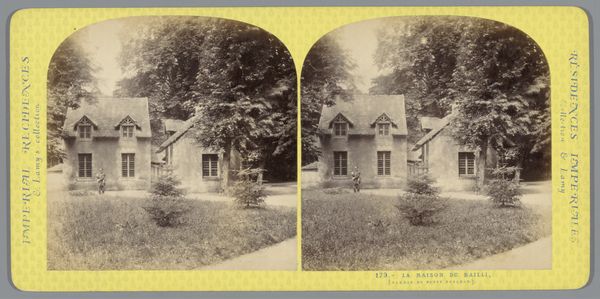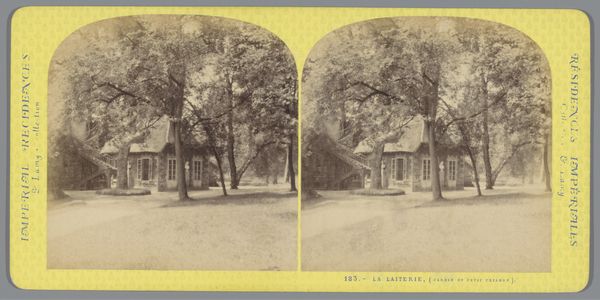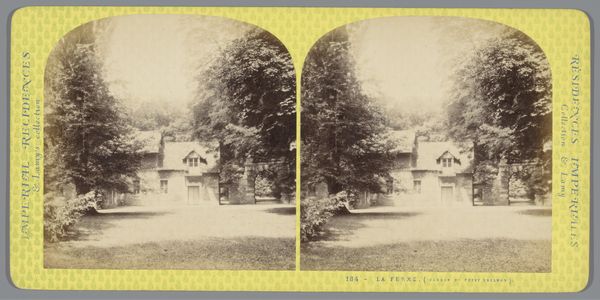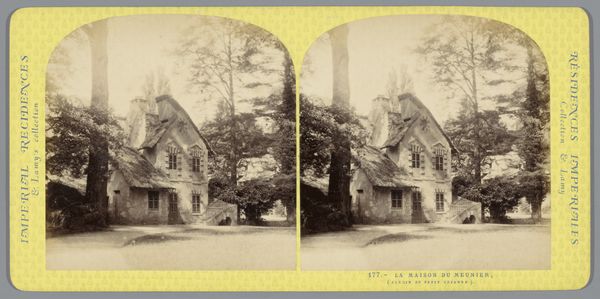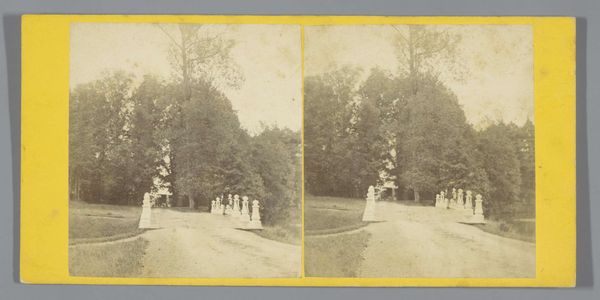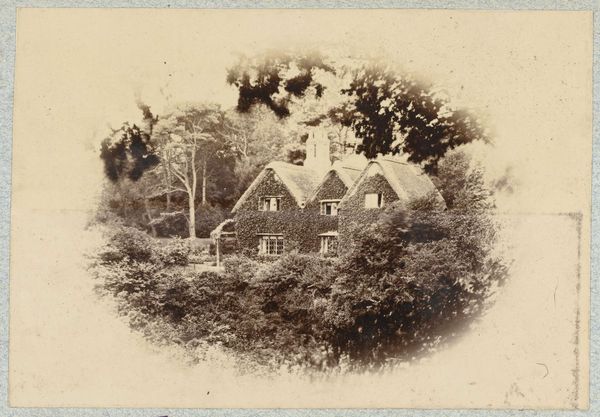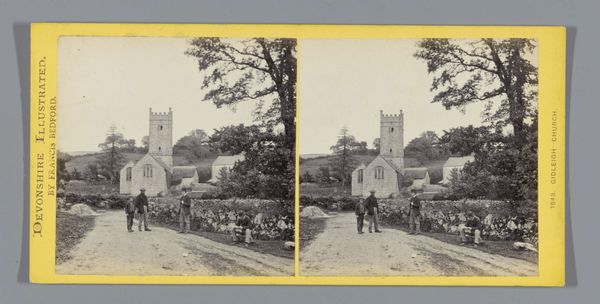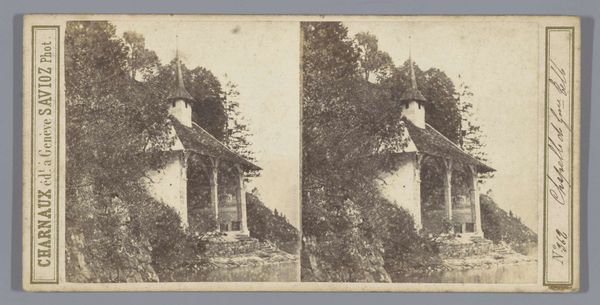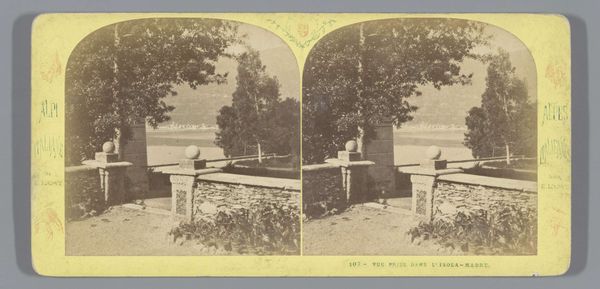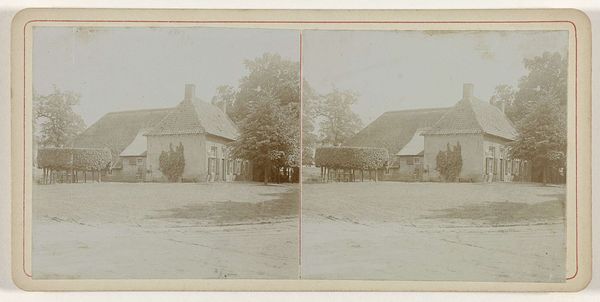
Gezicht op Le Boudoir in Le Hameau de la Reine bij het Petit Trianon 1860 - 1880
0:00
0:00
Dimensions: height 87 mm, width 178 mm
Copyright: Rijks Museum: Open Domain
Curator: Let's discuss this gelatin-silver print, dating roughly between 1860 and 1880, titled "Gezicht op Le Boudoir in Le Hameau de la Reine bij het Petit Trianon" by Ernest Eléonor Pierre Lamy. Editor: The first thing that strikes me is the overwhelming sense of organic growth, almost consuming the architecture. The textural contrast between the manicured lawn and the wild vines is very evocative. Curator: Precisely. Observe how Lamy meticulously uses the albumen print to emphasize the structural clarity beneath the vegetation. The contrast reinforces the deliberate construction, framed through the Romantic lens of nature reclaiming artifice. Editor: It makes me think about labor, actually. All the invisible labour to construct this space in the first place for, in this case, I’m sure it was some member of the aristocracy to gaze out in supposed appreciation for all that is naturally made. Curator: Your materialist reading is apt, although consider the inherent formalism within the composition itself. The photographic medium inherently mediates and comments on these historical divisions between different classes and even between art forms like architecture and photography. Editor: But without the labour of those unseen individuals and social contexts, we wouldn’t be having this conversation right now about materials. Even here, the photographer must prepare and combine all his alchemical processes. Curator: Granted, it highlights a significant interplay. Consider, also, the duality presented; an image documenting a fabricated rural idyll—an interesting reflection on constructed realities. Editor: Yes, I mean Lamy clearly has an intention, but is more interesting perhaps when we pull at the material processes behind that intention. What emerges at the forefront is a very clear narrative about our modern relationship to historical labour. Curator: I concede your argument holds considerable weight. Looking again through your viewpoint is helping reveal more subtle structural narratives hidden. Editor: Exactly. It helps pull away from simply consuming at face value, but appreciating that things don’t emerge into material reality ex nihilo.
Comments
No comments
Be the first to comment and join the conversation on the ultimate creative platform.
